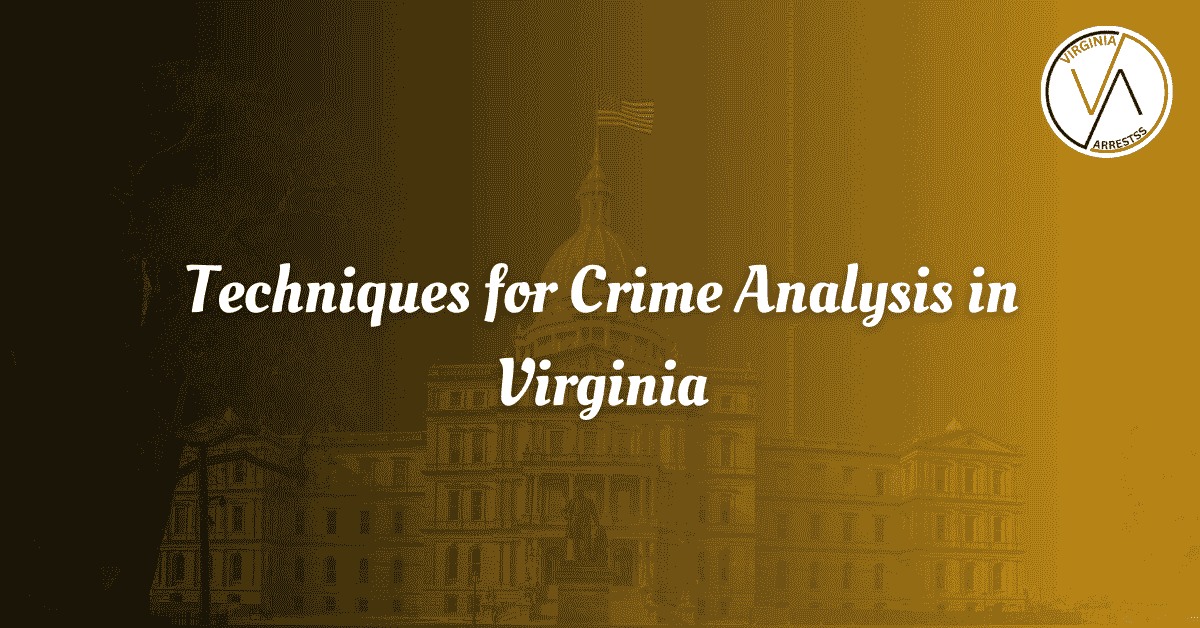Techniques for Crime Analysis in Virginia
Crime analysis in Virginia involves the systematic study of crime and criminal behavior within the state. By utilizing various analytical techniques, law enforcement agencies can better understand crime patterns, trends, and hotspots. These insights help in developing effective strategies for crime prevention and intervention.
Through the application of data-driven approaches, crime analysts in Virginia can identify correlations between different types of crimes, locations, and times. This information is crucial for law enforcement agencies to allocate resources efficiently and target specific areas for crime reduction efforts. By employing advanced crime analysis techniques, Virginia can enhance public safety and reduce criminal activity across the state.
Crime Analysis Techniques in Virginia
Crime analysis techniques play a crucial role in law enforcement agencies across Virginia. By utilizing data and statistics effectively, authorities can better understand crime patterns and trends, leading to more targeted and efficient crime prevention strategies.
Data and Statistics Utilization
Law enforcement agencies in Virginia rely on data and statistics to analyze crime trends, identify hotspots, and allocate resources effectively. By utilizing advanced analytical tools, agencies can visualize crime data, identify patterns, and make informed decisions to combat criminal activities.
Technology Integration in Crime Analysis
Technology integration has revolutionized crime analysis in Virginia, allowing agencies to leverage advanced software and tools for data collection, analysis, and visualization. By incorporating technologies such as GIS mapping and predictive modeling, law enforcement can enhance their crime analysis capabilities and improve response times.
Pattern Identification for Crime Prevention
Identifying patterns in criminal behavior is essential for effective crime prevention in Virginia. By analyzing historical data and crime trends, law enforcement agencies can proactively identify potential threats, allocate resources strategically, and implement targeted interventions to prevent crimes before they occur.
Threat Detection through Analytical Methods
Analytical methods such as data mining and predictive modeling are instrumental in threat detection for law enforcement agencies in Virginia. By analyzing various data sources, including social media, surveillance footage, and criminal records, agencies can identify potential threats and take proactive measures to mitigate risks.
Geographic Profiling for Criminal Investigations
Geographic profiling is a powerful technique used in criminal investigations in Virginia to narrow down suspect lists and prioritize investigative efforts. By analyzing the spatial distribution of crimes and offender behavior, law enforcement agencies can create geographical profiles to aid in criminal investigations.
Utilizing Predictive Modeling in Crime Analysis
Predictive modeling is a valuable tool for crime analysis in Virginia, allowing agencies to forecast future crime trends and allocate resources proactively. By analyzing historical data and identifying patterns, law enforcement can anticipate potential criminal activities and implement preventive measures to deter offenders.
Resource Allocation Optimization Strategies
Optimizing resource allocation is essential for law enforcement agencies in Virginia to maximize their effectiveness in crime prevention. By utilizing data-driven approaches and analytical techniques, agencies can allocate resources efficiently, prioritize high-risk areas, and enhance their overall operational efficiency.
Priority Setting for Crime Prevention Efforts
Setting priorities for crime prevention efforts is crucial in ensuring the effective utilization of resources in Virginia. By analyzing crime data, identifying high-priority areas, and evaluating the impact of interventions, law enforcement agencies can focus their efforts on areas with the highest potential for crime reduction.
Creating Safer Communities through Analysis Techniques
By leveraging advanced crime analysis techniques, law enforcement agencies in Virginia can work towards creating safer communities for residents. Through data-driven decision-making, technology integration, and proactive threat detection, agencies can enhance their crime prevention efforts and ultimately improve public safety across the state.
Frequently Asked Questions
Find answers to commonly asked questions about crime analysis techniques in Virginia below.
What are the main techniques used for crime analysis in Virginia?
Crime analysts in Virginia utilize various techniques such as GIS mapping, statistical analysis, hot spot analysis, and link analysis to identify patterns and trends in criminal activities.
How does GIS mapping help in crime analysis in Virginia?
GIS mapping allows crime analysts to visually represent crime data on maps, enabling them to identify hot spots, trends, and patterns that can help law enforcement agencies in making informed decisions and allocating resources effectively.
What is statistical analysis and how is it used in crime analysis in Virginia?
Statistical analysis involves the use of mathematical methods to analyze crime data, identify correlations, and predict future criminal activities. In Virginia, crime analysts use statistical tools to identify crime trends and patterns for proactive policing.
What is hot spot analysis and why is it important in crime analysis in Virginia?
Hot spot analysis is a technique used to identify locations with high crime rates or concentrations of criminal activities. In Virginia, crime analysts use this technique to focus law enforcement efforts on areas with the highest crime rates, leading to more effective crime prevention strategies.
How does link analysis help in solving crimes in Virginia?
Link analysis is a method used to identify relationships and connections between individuals, events, or criminal activities. In Virginia, crime analysts use link analysis to uncover criminal networks, track suspects, and solve complex cases by visualizing connections between various elements of a crime.
What role does crime analysis play in law enforcement agencies in Virginia?
Crime analysis is crucial for law enforcement agencies in Virginia as it helps in identifying crime patterns, predicting future criminal activities, allocating resources efficiently, and developing effective crime prevention strategies. By utilizing various techniques and tools, crime analysts contribute significantly to the overall safety and security of communities in Virginia.







